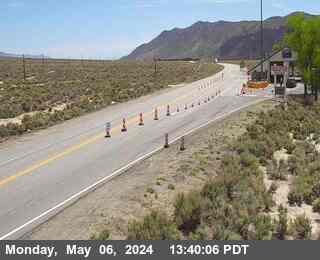Mammoth Lakes / Bishop / 395 / Inyo and Mono County
Road Conditions & Winter Driving Tips
Important Links: Before you drive up, always check out our Mammoth to Bishop Weather Discussion. Cal Trans Social Media Pages: Twitter Feed – Facebook Feed, and the Inyo National Forest Road Conditions Feed. Cal Trans: 1-800-427-7623 (ROAD)
395 Cal Trans Traffic Webcams
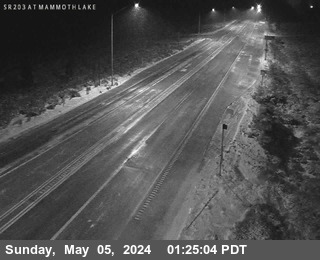

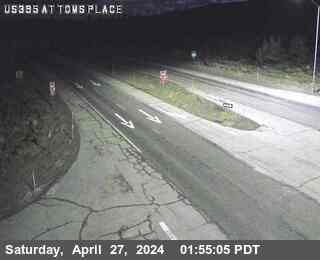
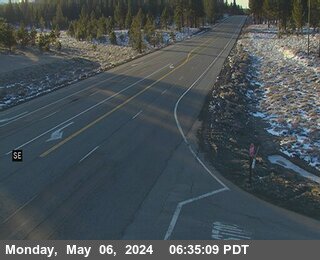
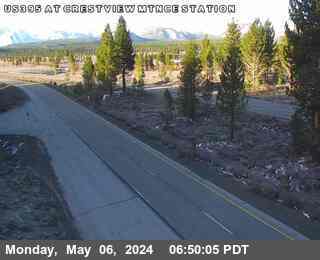

Below is the Cal Tran Quick App for your quick access. If you want to access the map directly use this link.
Welcome to our Road Condition Page
When Traveling to Mammoth Lakes, please carry chains and a winter survival kit with extra water and food in your trunk as well. Mammoth Lakes can get multiple feet of snow anytime from late September – May.
Before you ever leave home to drive up, you should have practiced in your driveway or on the side of a street putting your snow chains on. Watch the video below to learn more. If your search chain installs on YouTube, you can find a bunch of videos on this subject.
As a 30-year Mammoth Local, my advice is to have an AWD or 4 x 4 vehicle if you’re traveling here during a big storm.
For those with a 2-wheel drive, you will need to get really good at putting on and taking off your chains. Back when I had a two-wheel drive, I could pull over, do the job, and be back on the road in 10 mins.
The first time I tried it in a storm, it took 35 minutes, and I was frustrated; I learned quickly you can, too. It should also be said that if you’re in a 2-wheel drive with chains, you will find travel hard if the roads are R2.
The best advice is when the roads are that deep, don’t try and brave it. More than likely, you will get stuck.
PS Always add a shovel to your car when the forecast is calling for dumpage. At some point, you will need to dig out yourself or help somebody out.
There are a ton of Winter Driving Tips listed below. Don’t miss them.
Snowman
Chain Installation
You must stop and put on chains when highway signs indicate chains are required. You can be cited by the California Highway Patrol and fined if you don’t. You will usually have about a mile between the “Chains Required” signs and the checkpoint to install your chains.
- Control areas can change rapidly from place to place because of changing weather and road conditions.
- The speed limit when chains are required is 25 or 30 miles an hour.
- When you put on chains, wait until you can pull completely off the roadway to the right. Do not stop in a traffic lane where you will endanger yourself and block traffic.
- Chain Installers: If you use the services of a chain installer, be sure to get a receipt and jot the installer’s badge number on it. Remember, chain installers are independent business people, not Caltrans employees. Having the badge number may help with any misunderstandings later. Chain installers are NOT allowed to sell or rent chains.
- When removing chains, drive beyond the signs reading “End of Chain Control” to a pull-off area where you can safely remove them.
The California Department of Transportation (Caltrans) does not sell nor recommend specific brands of tire chains. It is best to check your vehicle manufacturer’s specifications for the use of tire chains/traction devices.
Chain Installation Chart (PDF) depicting the proper placement of traction devices for all vehicles.
Chain Requirement Levels
During the winter months, motorists may encounter traction chain controls in the mountain areas within California. When chain controls are established, signs will be posted along the road indicating the type of requirement. There are Three Levels of Chain Requirements in California:
- Requirement 1 (R-1): Chains are required on all vehicles except passenger vehicles and light-duty trucks under 6,000 pounds gross weight and equipped with snow tires on at least two drive wheels. Chains must be carried by vehicles using snow tires. All vehicles towing trailers must have chains on one drive axle. Trailers with brakes must have chains on at least one axle.
- Requirement 2 (R2): Chains or traction devices are required on all vehicles except four-wheel/all-wheel drive vehicles with snow-tread tires on all four wheels.
NOTE: (Four-wheel/all-wheel drive vehicles must carry traction devices in chain control areas.) - Requirement 3 (R3): Chains or traction devices are required on all vehicles, with no exceptions.
Truckers see our Truck Chain Requirements page.
R-1 and R-2 are the most common conditions. A highway will often be closed before an R-3 condition is imposed. Some local areas may use variations of these designations. You must follow the directions on the signs posted for chain controls or any instructions given by Caltrans or CHP personnel at chain control checkpoints, even if these are at variance with broadcast road condition reports or information contained herein.
1 Snow-tread Tires: The California Vehicle Code, Section 558 defines a snow-tread tire as follows, “A ‘Snow-tread tire’ is a tire which has a relatively deep and aggressive tread pattern compared with a conventional passenger tread pattern.” Snow-tread tires can be identified by examining the sidewall of the tire where the letters MS, M/S, M+S or the words MUD AND SNOW have been stamped into the sidewall.
2 Tire Traction Devices: The California Vehicle Code, Section 605 defines tire traction devices as follows: “Tire Traction Devices are devices or mechanisms having a composition and design capable of improving vehicle traction, braking and cornering ability upon snow or ice-covered surfaces. Tire traction devices shall be constructed and assembled to provide sufficient structural integrity and to prevent accidental detachment from vehicles. Tire traction devices shall, at the time of manufacture or final assembly, bear a permanent impression indicating the name, initials or trademark of the assembling company or primary manufacturer and the country in which the devices were manufactured or assembled in final form.”
The full, searchable version of the California Vehicle Code is available at Leginfo, the website for California Legislative Information.
Please note: The California Department Of Transportation (Caltrans) reserves the right to prevent any vehicle from entering a chain control area when it is determined the vehicle will experience difficulty in safely traveling the area.
Please be aware that the Cal Trans Information below and on the App you have on your phone is NOT REAL TIME! There can be up to an hour delay.
Winter Driving Tips – On Your Way to Mammoth Lakes
Here in Mammoth Lakes, we get Mammoth Snow Falls. Driving in all that snow is accomplished with the advice below and experience.
In Mammoth Lakes, we are blessed with a Snow Removal Team that operates around the clock to keep Mammoth clear and drivable just about every day of the year.
If you are all new to this you just need to get snow smart and this section will help you in the area of winter snow driving.
Bridgestone/Firestone worked with IMSA and SCCA championship-winning race car driver Peter Cunningham (also a three-time national ice driving champion), to develop these tips for safe winter driving.
During the winter months, keep abreast of weather reports in your area. If snow or ice is predicted, make plans to leave early or arrive later. An alarm clock set to an earlier time can be a good friend in helping you avoid difficulties.
If you can move a night trip to daylight hours, do so. Not only is visibility better, but if your vehicle is stalled, you are more likely to receive prompt assistance during the daytime.
Prepare your vehicle for winter driving; use this checklist as a guideline:
1. Check windshield wiper blades to make sure they work properly. In some areas, snow blades are an effective alternative to conventional wiper blades.
2. Have your mechanic test the anti-freeze/coolant to provide the correct level of protection required in your driving area.
3. Make sure your tires are properly inflated. Underinflation can reduce the gripping action of tires because the tread will not meet the road surface as it was designed to. Overinflation has the same effect.
4. If you live in areas where snow and ice are certainties of winter driving, don’t depend on all-season tires. Instead, install snow tires. Snow tires are made of softer components and have a unique tread design that provides better traction and road-gripping abilities.
5. Keep your gas tank at least half-full. The extra volume can help reduce moisture problems within your fuel system. It also adds helpful weight to your vehicle.
6. In rear-wheel drive vehicles, extra weight in the trunk or truck bed may be helpful. Use care– unsecured weight can shift while you are moving or if you have to stop suddenly. Bags of sand can provide weight and, if sprinkled on the ice, sand helps provide traction.
Before you leave your driveway, scrape the ice and snow from every window and the exterior rearview mirrors, not just a small patch on the windshield. Don’t forget to remove snow from headlights and brake lights.
Try to remove ice and snow from your shoes before getting in your vehicle. As they melt, they create moisture build-up, causing windows to fog on the inside. You can reduce this fogging by turning the air recirculation switch to the OFF position. This brings in drier, fresh air. You can also run your air conditioner which serves as a dehumidifier for a few minutes.
You and your passengers should all use safety belts, both lap, and shoulder straps. Pull them snugly to ensure they work properly.
Adjust head rests. Rear-end collisions are common in winter driving and a properly-adjusted headrest can prevent or reduce neck injuries.
Before you shift into gear, plan the best route to your destination. Avoid hills, high congestion areas, and bridges if possible.
Although your radio can provide helpful traffic information, it can also be a distraction for some drivers. Since driving is more a mental skill than a physical skill, you may want to keep it turned off.
Don’t use a cellular phone when driving on ice or snow. Even if you have a hands-free model, you need to concentrate on driving, not on a telephone conversation.
Drive slowly and remember that posted speed limits identify the maximum speed allowed when weather conditions are ideal. Law enforcement agencies can write citations to motorists driving the posted speed limit if weather conditions warrant a slower speed.
Be more alert to the actions of other drivers.
Anticipate cars coming from side streets and put extra distance between your vehicle and the one in front of you. If someone is too close behind you, don’t speed up; slow down or let them go around you.
To make sure other drivers see you, always drive with your lights on. At night, in fog and heavy snow conditions, low beams may be more effective than high beams.
Keep a light touch on the brakes. Even with anti-lock braking systems (sometimes called ABS), you should apply light pressure to avoid locking the brakes and causing a skid. Pumping the brake pedal should be smooth action, going from light to firm in a gradual move. Tiptoe to slow is a good motto for winter drivers.
Keep both hands on the wheel and keep the wheel pointed to where you want your car to go. While it may sound overly simple, it could help you in a skid.
While manual transmissions may provide greater control to assist with braking, be careful when using downshifting as a way to slow the vehicle. Gear changes, particularly abrupt ones, can upset a vehicle’s balance and cause a skid to occur, especially in turns.
Keep your vehicle stocked with simple emergency equipment in case you do get stalled or have an accident. Consider keeping these items in your vehicle:
– blanket or extra clothes
– a candle with matches
– snacks
– beverages (never alcohol)
– flares
– C. B. radio, cellular phone or ham radio
– a small shovel
– flashlight
– windshield scraping device
– tow rope
– bag of sand or cat litter for traction
– long jumper cables
(for more on building a winter emergency kit, click here.)
If you do have trouble, run the engine only briefly to run the heater, not continuously. Carbon monoxide can accumulate more easily in a non-moving vehicle.
Severe engine damage may also occur if the motor runs for long periods when the vehicle is not in motion. Warming up a car prior to travel is a common practice, but most engines really don’t need more than a minute at most to circulate oil to all internal parts. Check your vehicle’s owner’s manual for information about your engine. (source: tiresafety.com)
Here are some great links to more on driving in Winter.
http://www.ccohs.ca/oshanswers/safety_haz/icesnow.html
Chain Requirements
R1: Chains are required – snow tread tires allowed.
R2: Chains are required on all vehicles except four-wheel drive vehicles with snow tires on all four wheels.
R3: Chains are required – all vehicles – no exceptions.
R1 and R2 are the most common conditions. The highway is usually closed before an R3 condition is imposed.
Cal Trans: 1-800-427-7623 (ROAD)
Mammoth Yosemite Airport Webcams (MMH)





